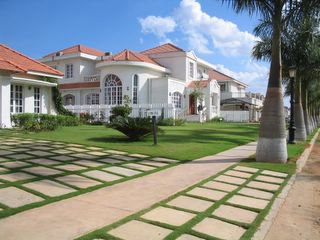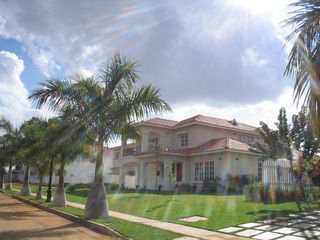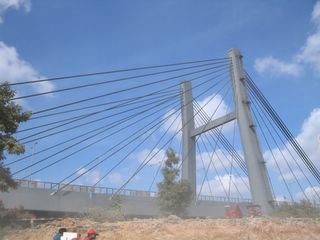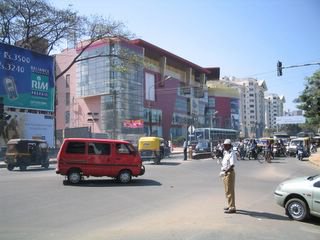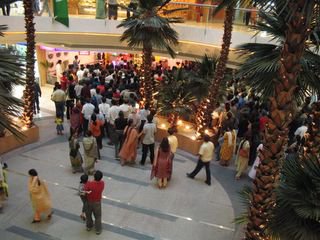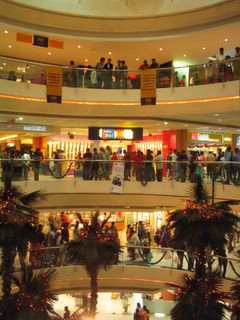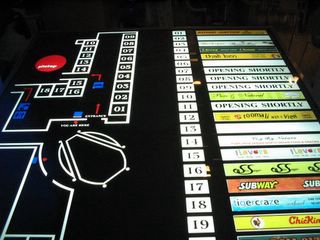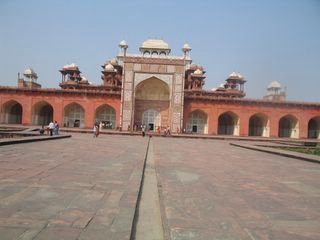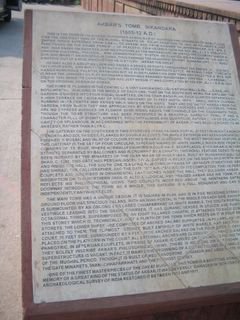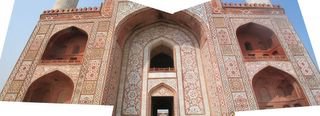The name will not ring a bell with most people. Umrao Singh was the last surviving Indian Victoria Cross winner. He died at the Army Research and Referral hospital in New Delhi on the 22nd of November 2005.
The Victoria Cross used to be the highest gallantry award awarded in pre-independence India, till it was replaced by the Param Vir Chakra after partition (Pakistan calls it the Nishan-i-Haider).
According to http://faculty.winthrop.edu/haynese/india/medals/VC/2USingh.html, Subedar Umrao Singh (and honorary Captain) was awarded the VC in recognition of his act of bravery on 15 December 1944 at Kaladan Valley, Arakan, Burma. The site also lists his date and place of birth as 21 November 1920, Palra village, Jhajjar, Rohtak tehsil, Haryana, and was the son of Mohar Singh Yadav.
The Hindu (link to page on The Hindu) carried a small obit with these comments:
Here is the list of links that carried the story (according to a Google News search I did at 1:45 pm):
© 2005, Abhinav Agarwal (अभिनव अग्रवाल). All rights reserved. Reposted to this blog 2013
The Victoria Cross used to be the highest gallantry award awarded in pre-independence India, till it was replaced by the Param Vir Chakra after partition (Pakistan calls it the Nishan-i-Haider).
According to http://faculty.winthrop.edu/haynese/india/medals/VC/2USingh.html, Subedar Umrao Singh (and honorary Captain) was awarded the VC in recognition of his act of bravery on 15 December 1944 at Kaladan Valley, Arakan, Burma. The site also lists his date and place of birth as 21 November 1920, Palra village, Jhajjar, Rohtak tehsil, Haryana, and was the son of Mohar Singh Yadav.
The Hindu (link to page on The Hindu) carried a small obit with these comments:
Subedar Major and Honorary Captain Singh (85), from Jhajjar in Rohtak, Haryana, won the Victoria Cross, the highest award for bravery under British India, for repulsing four Japanese attacks on his advanced battery position in the Kaladhan valley in Burma, on the night of December 15-16, 1944. He killed several Japanese soldiers before being grievously wounded. Six hours later, on a counter attack, Allied forces found him at the site of his gun, injured beyond recognition. Around him lay 10 dead Japanese soldiers. Subedar Major Singh was the last survivor among 40 Victoria Cross winners in the Indian Amy known for their feats in the First and Second World Wars."
Here is the list of links that carried the story (according to a Google News search I did at 1:45 pm):
- The Hindu (link)
- The Telegraph (Link)
- The Times (Link)
- Indian Express (Link)
- Outlook India (Link)
- Sify (Link)
- New Kerala (Link)
- Asian Age (Link)
- Govt of India's Press Information Bureau (Link)
- Daily News and Analysis (Link)
- The Statesman (Link)
- Chennai Online (Link)
- Mumbai Mirror (Link)
As a havildar on December 15/16 1944, Singh was in charge of one gun in the Kaladan Valley when it came under heavy fire from Japanese 74 mm guns. After an hour and a half of pounding, his section, consisting of two guns, was attacked by two Japanese companies. Under his inspired leadership it beat off the attack. Though twice wounded by grenades in the first attack, Singh held off the second by skilful control of the section's small arms' fire. At one point, with the attackers no more than five yards away, he manned a Bren gun himself and fired over the shield of his fieldpiece. Once again the Japanese were driven back, and the third and fourth attacks were beaten off, with the enemy suffering heavy casualties.And here is the bit from the Times:
When the final attack came, with his ammunition gone, the other gun over-run and all but two of his section badly wounded or dead, Singh closed with the enemy in furious hand-to-hand fighting. He struck down three Japanese in a desperate effort to save his gun, but was finally overwhelmed and knocked senseless.
Six hours later, when a counter-attack regained the position, Singh was found exhausted beside the gun, almost unrecognisable because of his seven wounds, with 10 dead Japanese lying around him. But the gun was still in working order.
The citation declared: "By his personal example and magnificent bravery Havildar Umrao Singh set a supreme example of gallantry and devotion to duty." Singh was invested with the Victoria Cross by King George VI at Buckingham Palace on October 15 1945.
AS A havildar (sergeant), Umrao Singh was the only non-commissioned officer of either the Royal Artillery or the Indian Artillery to be awarded the Victoria Cross in the Second World War. Forward observation officers are frequently at great personal risk when in exposed positions so as to direct artillery fire in support of armoured or infantry units. But Singh won his award for valour in what all gunners regard as their near-sacred duty — defence of the guns. By the end of 1944, General Sir William Slim’s 14th Army was poised for a right-flank offensive against Lieutenant-General Sakurai Seizo’s 28th Japanese Army in the coastal strip between the Irrawaddy and the Bay of Bengal. General Sir Philip Christison’s XV Corps of four divisions was given the job. The offensive was launched on December 12 but fierce resistance was met by the 81st
West African Division advancing down the Kaladan valley, every move forward being challenged by Japanese counter-attack. The 33 Mountain Battery, Indian Artillery, in which Havildar Umrao Singh was a field-gun detachment commander, was subjected to a sustained bombardment from Japanese 75mm guns and heavy mortars for one and a half hours on December 16, immediately before his gun position was attacked by two companies of Japanese infantry. Twice wounded by grenades during the first assault, Singh fought off the enemy with the detachment’s Bren light-machinegun while directing the rifle fire of the gun crew.
The second Japanese attack killed all the crew other than two members and himself, but was nevertheless beaten off. When the third assault came only a few rounds of small-arms ammunition remained and this was quickly used. With his last shot gone Singh seized a “gun bearer” — a heavy crowbar-like rod used for turning the gun trail — and closed with the attacking Japanese. He led the two surviving gun-crew members in hand-to-hand fighting until they were overwhelmed. He was seen to strike down three enemy infantrymen before falling under a rain of blows to the head.
Six hours later, after a counter-attack recovered the battery position, Singh was found unconscious beside his field-gun and almost unrecognisable from head wounds. Ten Japanese dead lay around him.
The citation for the award of the Victoria Cross read: “Havildar Umrao Singh set a supreme example of gallantry and devotion to duty.” His gun was still fit for firing and was in action again that day. He received his VC from King George VI at Buckingham Palace on October 15, 1945.
